May 15, 2025 | 13:16 GMT +7
May 15, 2025 | 13:16 GMT +7
Hotline: 0913.378.918
May 15, 2025 | 13:16 GMT +7
Hotline: 0913.378.918
On November 16, VAN published an article about banana wilt disease hit Khoai Chau – a major banana-growing area in the northern province of Hung Yen, causing a sharp reduction in banana farms there.
Nguyen Quy Duong, Deputy Director of the Plant Protection Department said that banana wilt disease has been detected in several provinces and cities in Vietnam such as Hanoi, Phu Tho, Lao Cai and Hung Yen in the last few years.
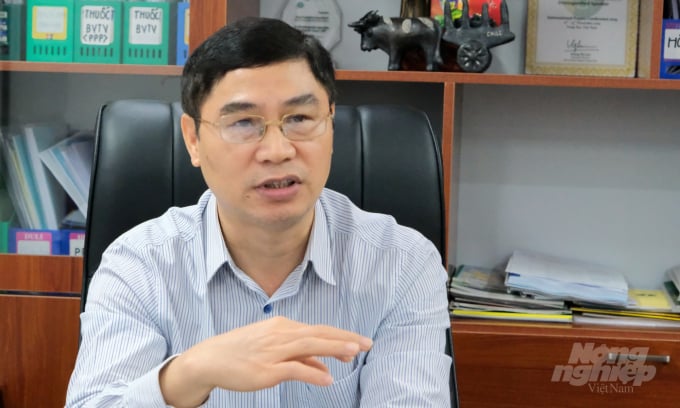
Nguyen Quy Duong, Deputy Director of the Plant Protection Department. Photo: Duc Minh.
In 2020, the Plant Protection Department under the Ministry of Agriculture and Rural Development established a working group to survey the actual situation of the disease. Through a survey on more than 10,000 hectares of bananas in the North, they found that banana wilt disease tends to cause strong damage in riverside farms.
Banana wilt disease appears and causes damage mainly in banana-growing areas for 3 years or more, the higher the rate of diseased trees seen in perennial growing areas. The disease can arise and cause damage during any stage of banana plant growth. The disease is most evident in the flowering and fruiting stages of banana trees.
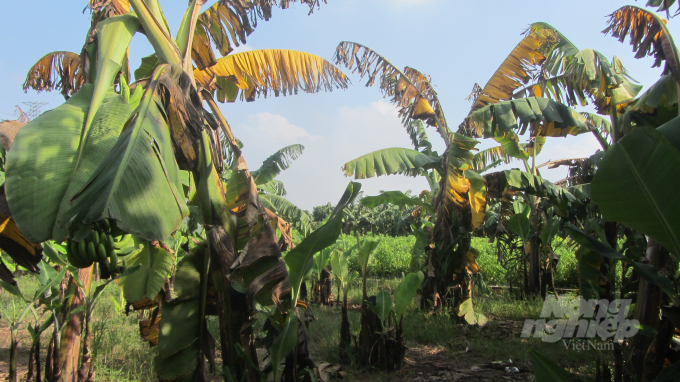
A banana farm infected with banana wilt disease Khoai Chau District, Hung Yen Province. Photo: H.Tien.
Some localities could not completely handle this disease even though they shifted to use organic fertilizers, organic microorganisms or re-planted with tissue-culture seedlings.
"Banana wilt disease kill banana plants gradually. It is caused by fungi that invade, grow and cause damage to the vessels. When diseased banana plants die, spores - reproductive organs of the diseased fungus - are released to the soil. Once in the soil, fungal spores germinate and penetrate the cells of other banana plant roots, then develop into root-damaging mycelium," said Duong.
Secondary small roots or young roots are infected by fungi, being damaged first. Then the fungus grows, entering the banana stems and then, the petioles and banana chambers, blocking the nutrient conduction vessels, leading to the lack of nutrition in the banana plant, causing yellow leaves, underdeveloped fruit and tree death.
Banana wilt disease, also known as Panama wilt disease, is caused by the fungus Fusarium oxysporum forma specialis cubense ( Foc)
Fusarium oxysporum is a multiphasic fungus that damages many crops such as cotton, flax, tomato, cabbage, peas, sweet potato, watermelon, oil palm, banana.
To date, Foc has been classified into three strains based on the banana variety that the fungus uses as a host. Specifically: Foc Race 1 (Foc 1), Foc Race 2 (Foc 2) and Foc Race 4 (Foc 4). The Foc 4 can be divided into two smaller strains, namely Tropical Foc 4 (Foc TR4) and Subtropical Foc 4 (Foc STR4). The strain that damages bananas in some provinces in Việt Nam now is TR4.
The TR4 strain has a wider host range and better survival ability to spread.
Duong said that currently, there were many guidelines to handle banana wilt disease.
To prevent the disease, the Plant Protection Department recommends that farmers choose varieties that are resistant to the disease. One of them is the GL3-5 variety developed by the Fruit and Vegetable Research Institute. This variety is now growing well in areas that have been hit by the disease before.
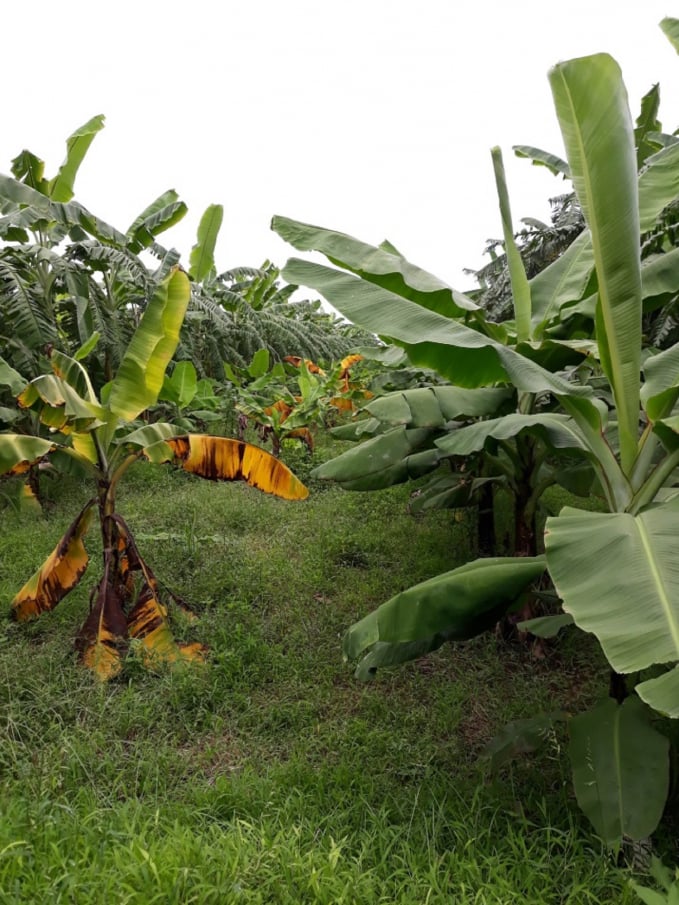
Varieties that are resistant to the banana wilt disease were developed including the GL3-5 variety developed by the Fruit and Vegetable Research Institute. Photo: Favri.
Besides varieties, the Department of Plant Protection recommends that people strictly follow the cultivation process. For example, when entering a banana garden suspected of being infected, or returning from an infected area, people need to put plastic bags on their shoes, sandals and boots.
People avoid going to infected areas before entering the areas where banana trees have not yet been affected because harmful fungi can stick to the soil and water on shoes, sandals and clothes. If in doubt, people must strictly control the entry and exit of banana farms, disinfect farming tools to prevent the ingress of disease sources.
Do not use seedlings that are from infected banana farms. Use healthy and disease-free banana varieties, and if possible, give priority to disease-free tissue cultured banana varieties.
In the infected area, people need to destroy all infected plants, including stems, leaves, banana tubers and plant residues in the garden according to the process guided by the Plant Protection Department. Particularly for the soil treatment process, it is necessary to sprinkle the lime powder into the planting hole, or preparations with antifungal properties.
For heavily infected areas, it is suggested that people rotate crops with some other crops, for example, corn, peanuts in the flat land. After about 2-3 years, people can replant bananas according to the same process from the beginning.
Le Minh Nam, Deputy Director of Hung Yen Province’s Plant Protection Sub-Department, said that relevant agencies co-operated to help farmers from the stage of seed selection, planting and disease control.
The provincial plan protection sub-department is promoting the application of Integrated Pest Management (IPM) or integrated crop health improvement (IPHM) to manage problems from plant health, soil health to farming methods, thus ensuring sustainable banana farming in particular and other crops in general.
Translated by Hien Anh
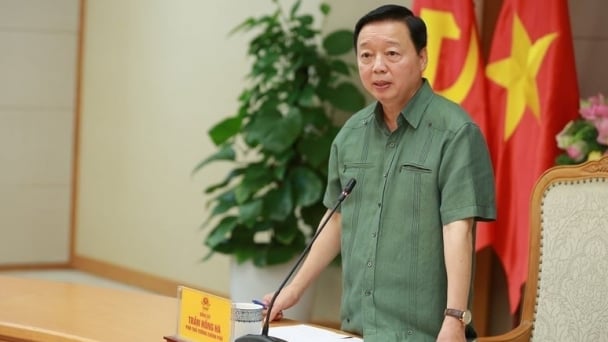
(VAN) Vietnam's draft amendment to Decree No. 156 proposes a mechanism for medicinal herb farming under forest canopies, linking economic development to population retention and the sustainable protection and development of forests.
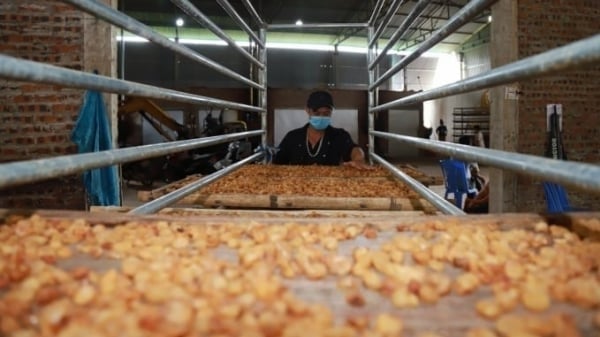
(VAN) In reality, many craft village models combined with tourism in Son La have proven effective, bringing significant economic benefits to rural communities.

(VAN) The international conference titled Carbon Market: International experiences and recommendations for Vietnam was successfully held recently in Ho Chi Minh City.
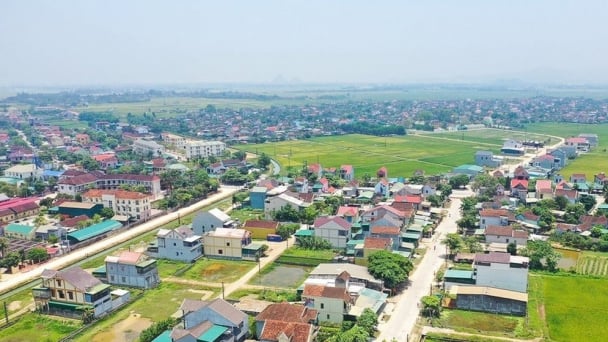
(VAN) According to the Project on rearranging provincial and communal administrative units, in 2025, the country will have 34 provinces/cities, 3,321 communes, wards, and special zones, and no district-level organization.
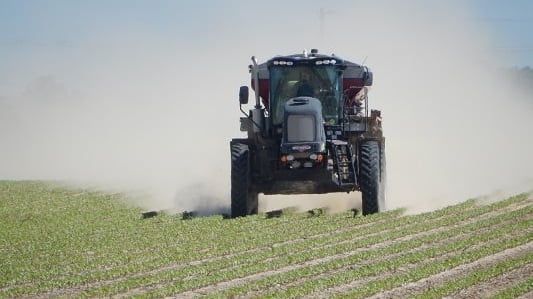
(VAN) The vice president of fertilizer with Stone X Group says the Trump administration’s tariffs are impacting fertilizer markets.
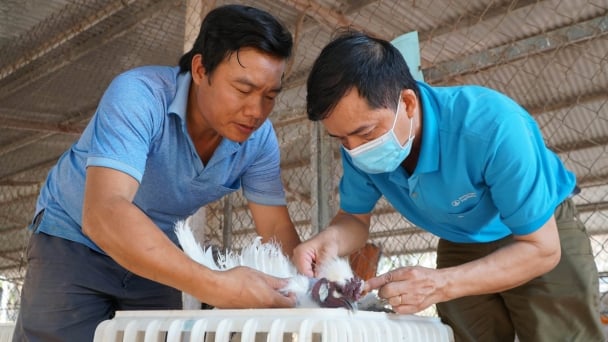
(VAN) Resolution 57 offers Vietnam a significant opportunity to narrow the global genetic technology disparity and convert its extensive genetic resources into commercial advantages.

(VAN) The Ministry of Agriculture and Environment will prioritize the implementation of five core and breakthrough solutions in science and technology, in addition to the seven groups of tasks identified in Decision No. 503.